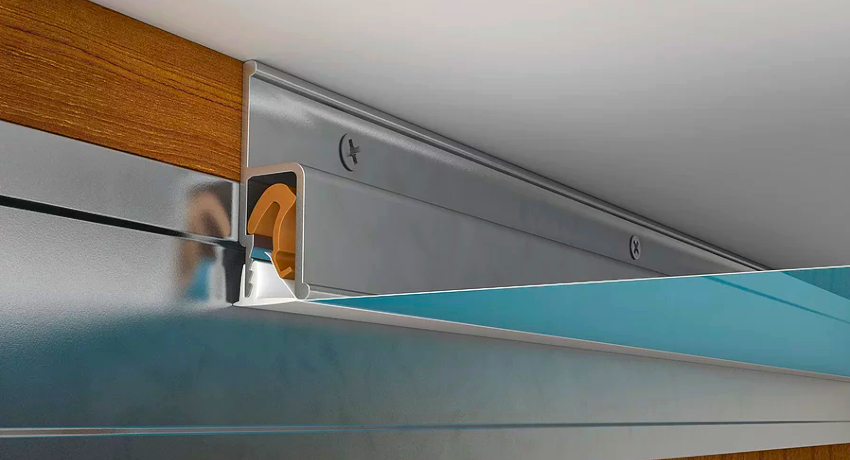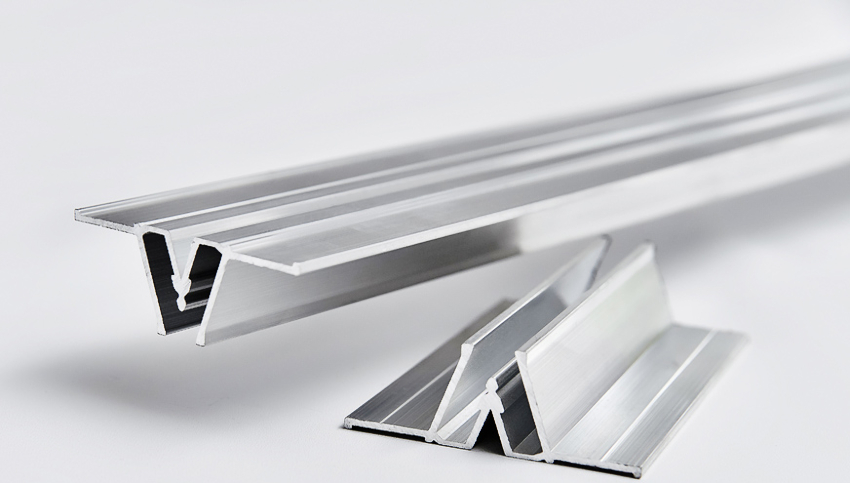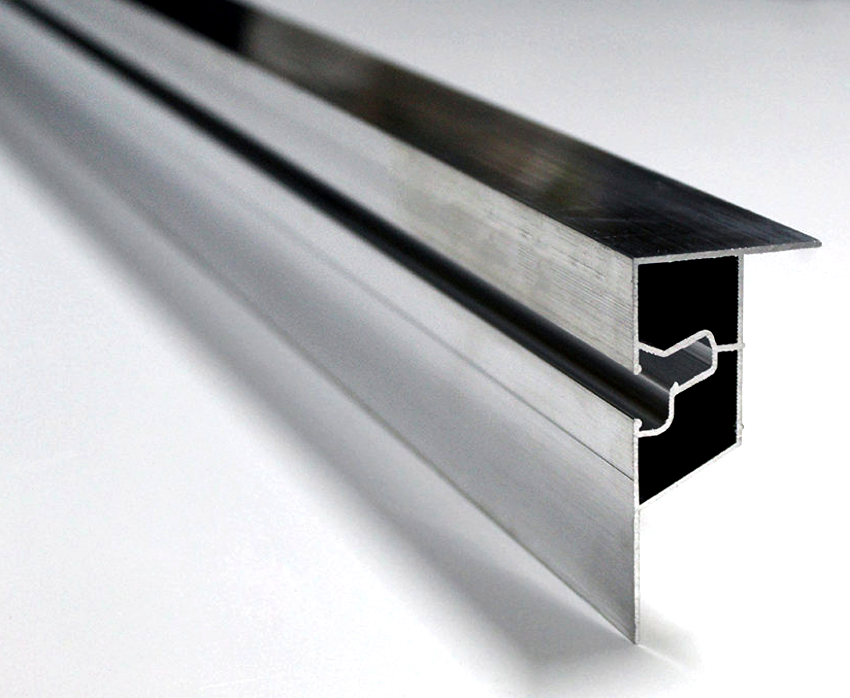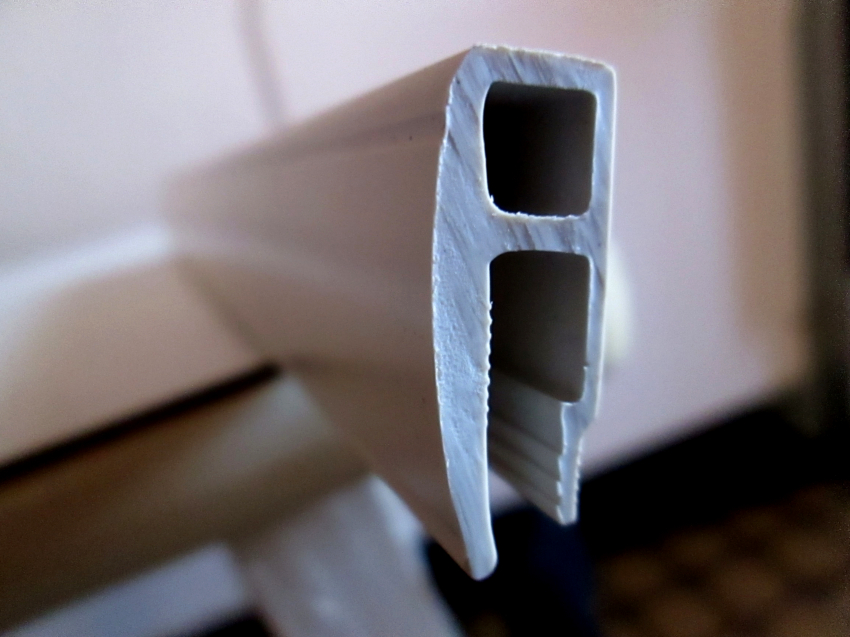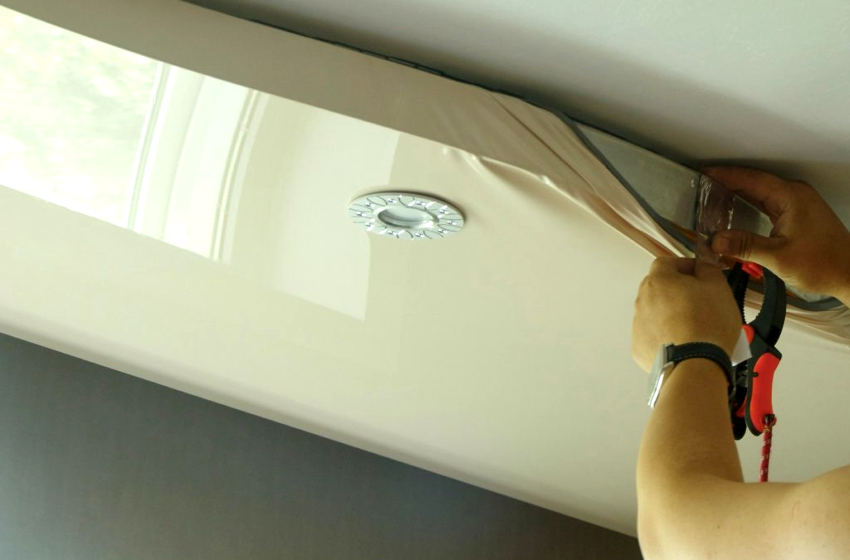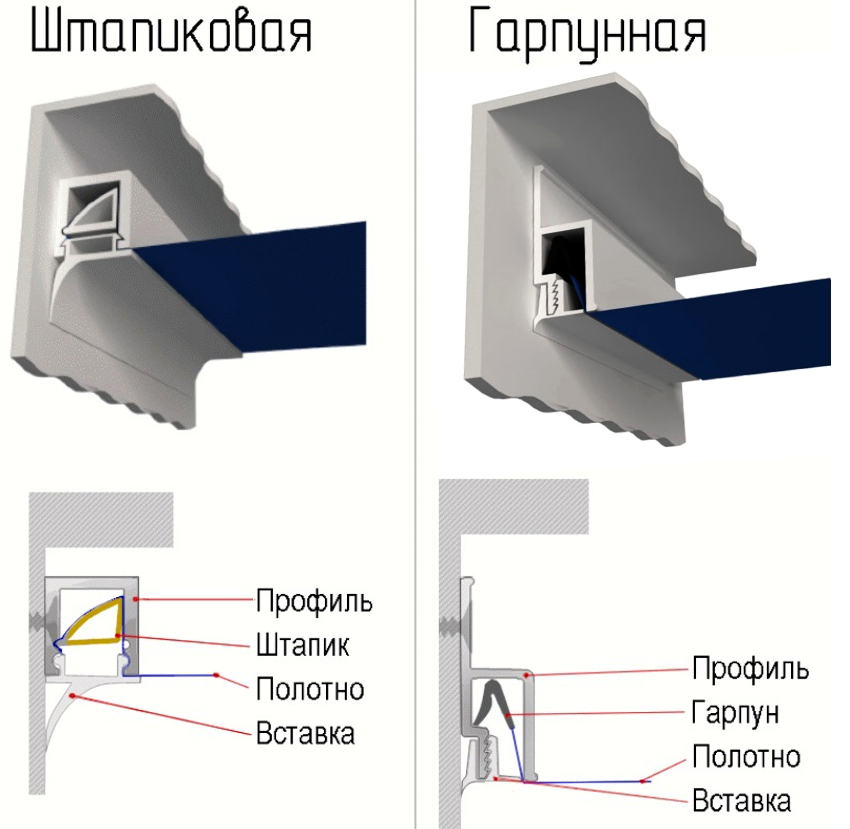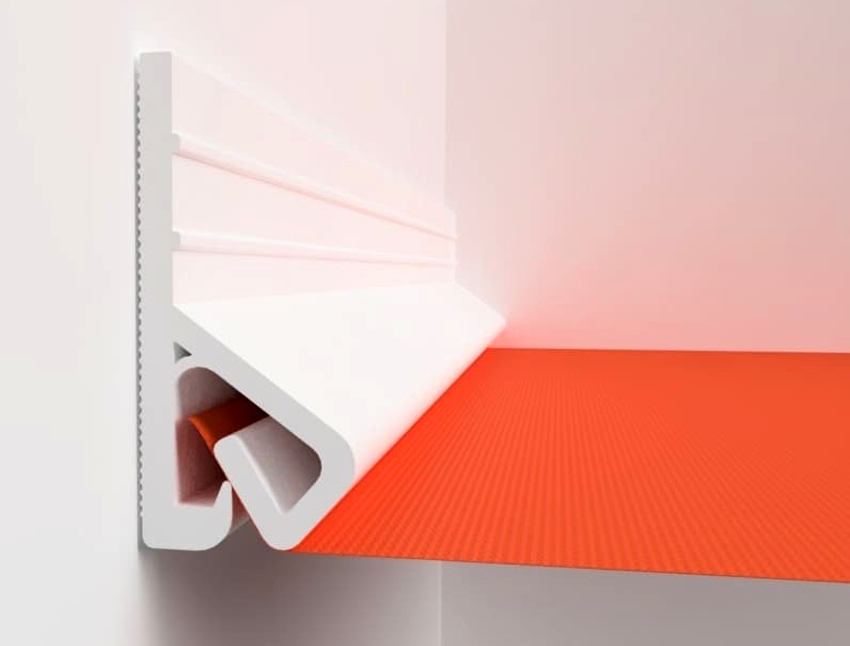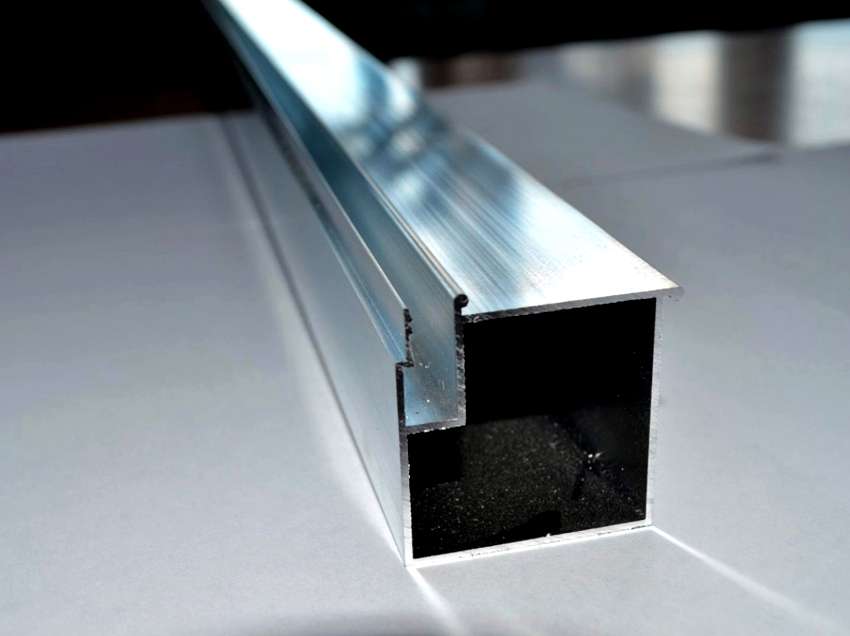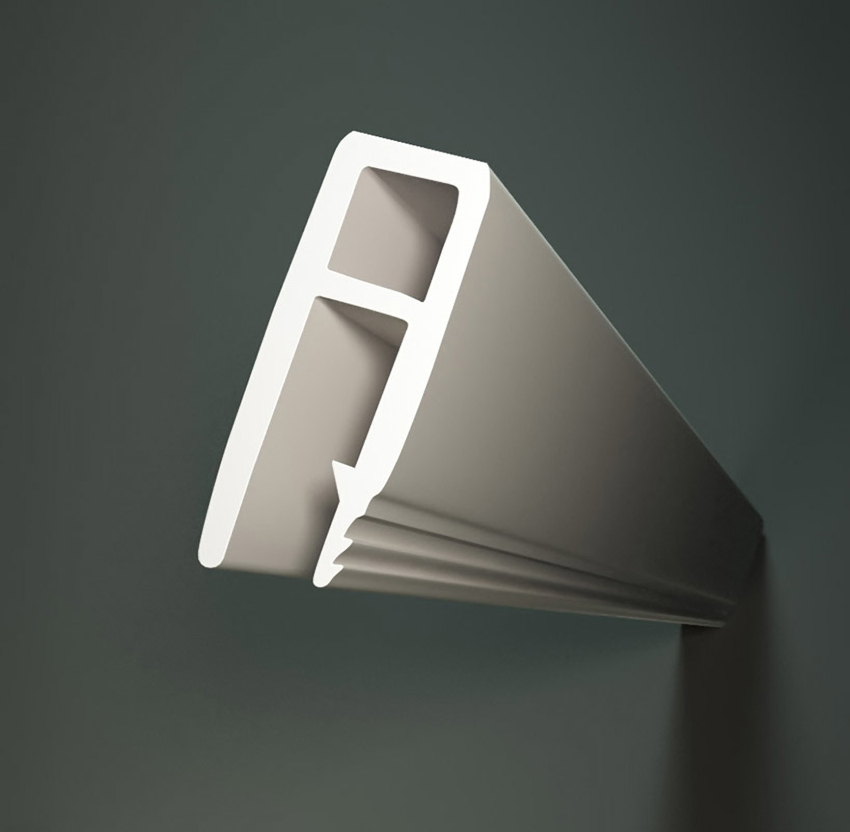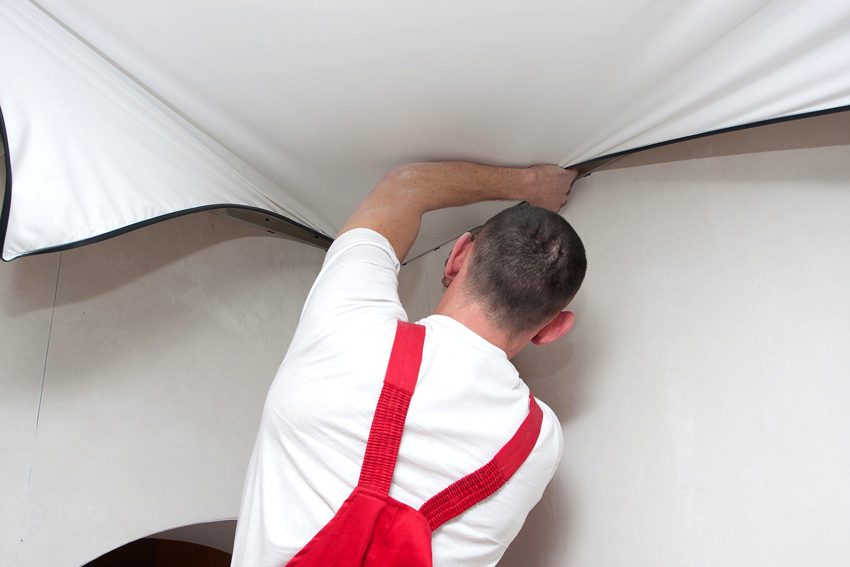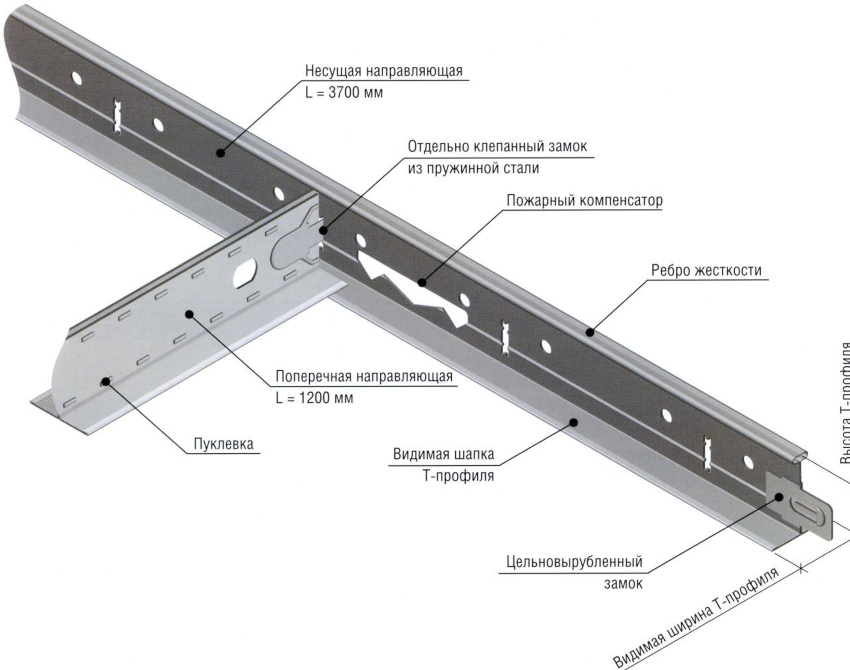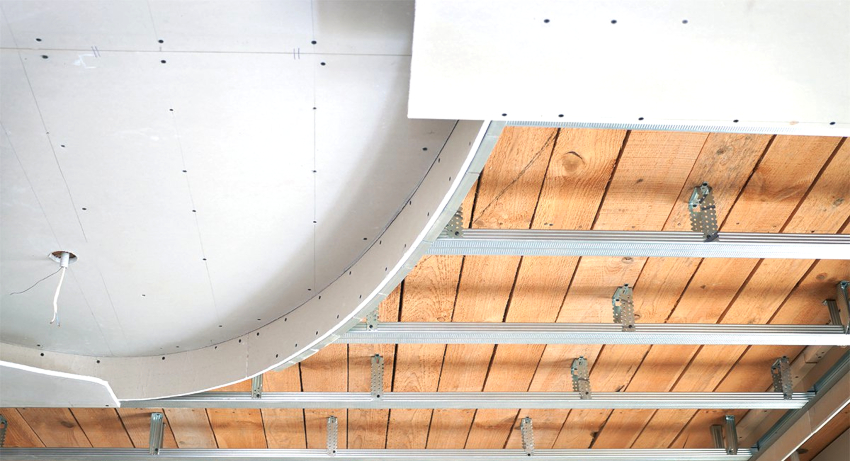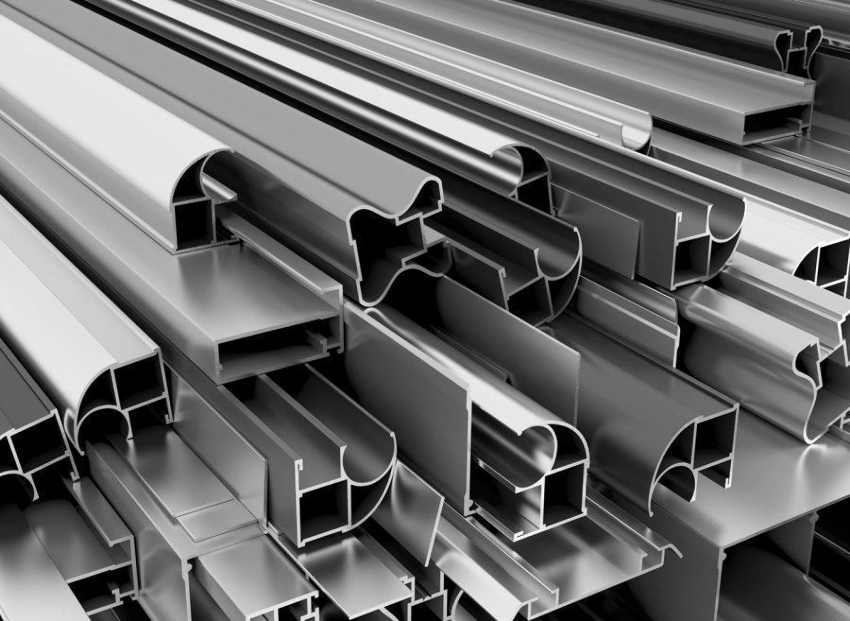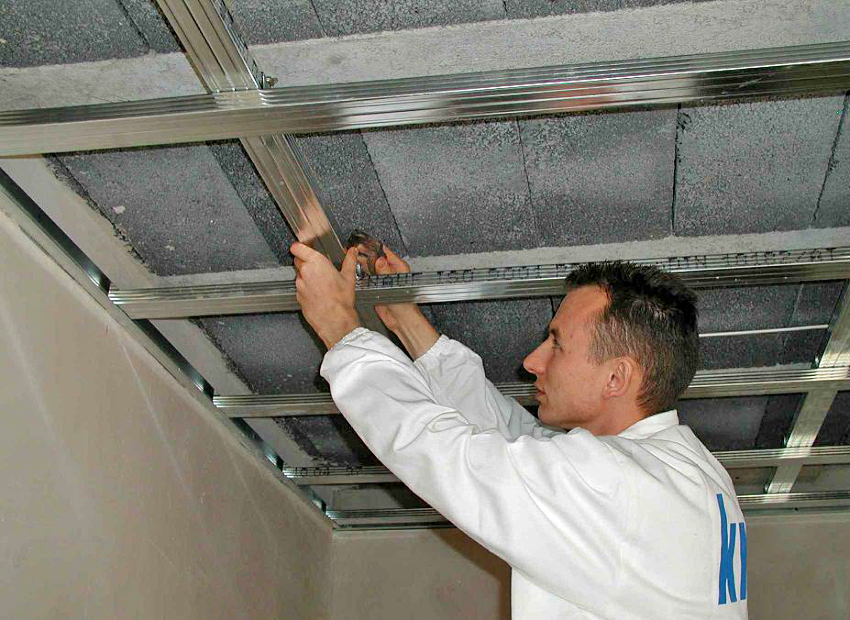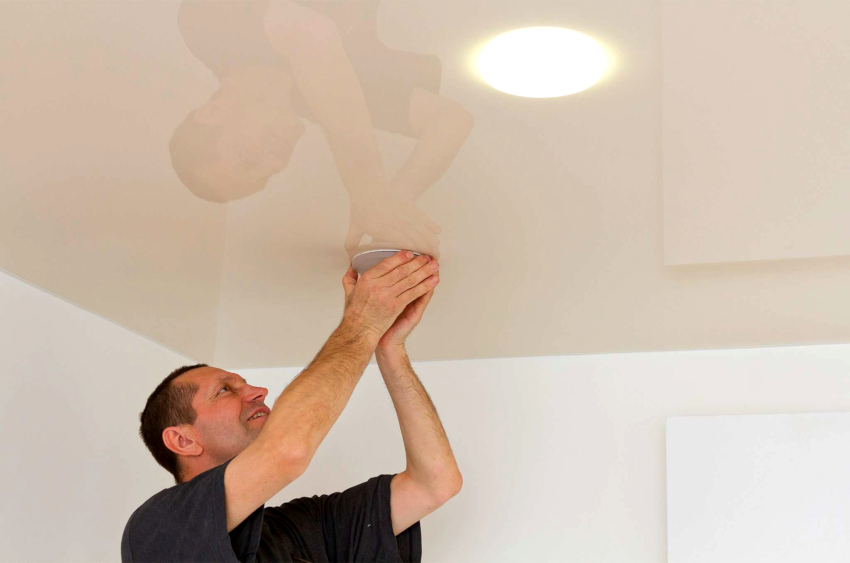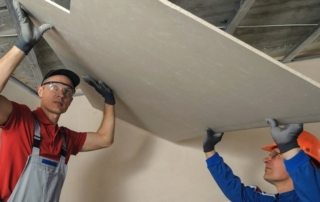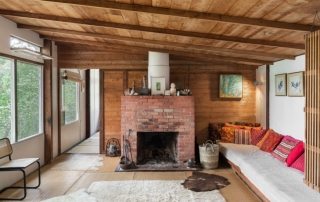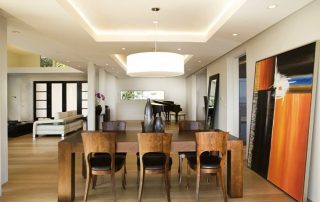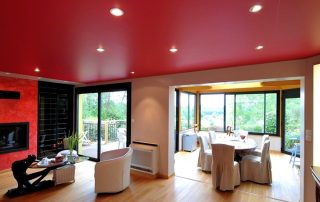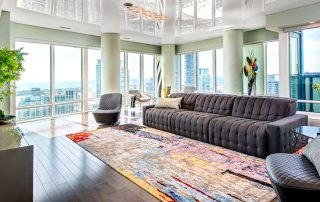A well-assembled stretch ceiling is always perceived as the perfection of repair craftsmanship. The technology is actually not that complicated. All necessary items can be purchased at the store. But the final result largely depends on how correctly they are selected. The most important component is the stretch ceiling profiles. They provide not only fastening strength, but also the aesthetics of the structure as a whole.
Content [Hide]
- 1 Ceiling profile: functional purpose
- 2 Types of ceiling profiles for stretch ceilings
- 3 Stretch ceiling-to-ceiling fastening technology
- 4 The main types of fastening stretch ceilings (fixing canvases)
- 5 Typical dimensions of profiles for stretch ceiling structures
- 6 How to install stretch ceilings: an algorithm of actions
- 7 Profile for stretch ceiling with LED lighting
- 8 False ceiling rails, system installation
- 9 The main types of ceiling hangers for profiles
- 10 Ceiling profile "Knauf": quality, ease of installation, price
- 11 Profiles for stretch ceilings: expert advice on the selection and application
Ceiling profile: functional purpose
Initially, stretch ceilings were used to hide defects. Today, their functional purpose has expanded significantly: canvases are massively used in the arrangement of residential and office premises. The structures are quickly installed and have a high level of aesthetics. The presence of a variety of designs allows you to choose an option for any design style.
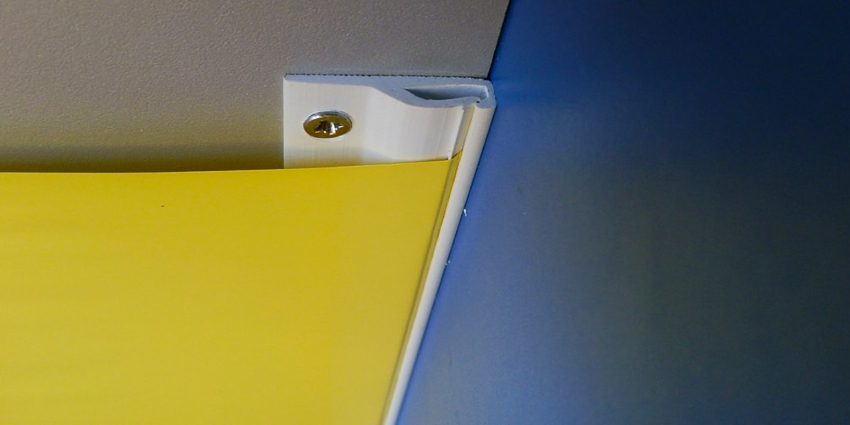
Thanks to the special shape of the profile, it is possible to wind and stretch the canvas around the entire perimeter of the room
The first stretch ceilings were made of fabric. It was moistened, attached with wooden slats to the top of the walls. The fabric dries up, stretches, forming an even canvas. Then impregnations were applied to it from a spray gun. For the aesthetics of this design, the quality of the rails and the method of their fastening were of great importance. Defects in wooden surfaces and loose fixation to the wall could contribute to the appearance of sagging, unevenness of the stretched material.
Today, the slats have been replaced with a special profile for the false ceiling. And polyvinyl chloride film is used as a stretch fabric. A frame is made from a profile along the walls or ceiling. The profile has a specific shape that allows you to wind and stretch the canvas around the entire perimeter of the room. In order for the tension to be ideal, it is necessary to correctly set the frame at a certain level, securely fix it to the surfaces.
Types of ceiling profiles for stretch ceilings
The active use of stretch ceilings has contributed to the emergence of different ways of fixing them, and, consequently, the manufacture of various types of profiles for stretch ceilings. The main materials for their manufacture are aluminum and plastic. As for the place of fixation, the following options can be distinguished here:
- Wall profile. Fixed to the wall along the perimeter of the room. The loss of height when using this type of profile is 3-12 cm.
- Ceiling profile. It is attached to the main ceiling. Often this method of stretch ceiling is called invisible. It is this installation option that allows you to maximize the height of the room, since the ceiling "steals" only 2-3 cm.
- Universal. This profile can be installed both on the wall and on the ceiling. It is used for the installation of various non-standard structures: multi-level, with complex geometry, etc.
- Separating. The profile is used when pulling large canvases, when there is a threat of sagging, as well as when installing combined ceilings, canvases of different colors, textures, etc.
To have a complete understanding of what profiles are, you need to get acquainted with the methods of fixing stretch films. More on this in the further material of the article.
Important! The result of installing a stretch ceiling will largely depend on how firmly the base (frame from the profile) is fixed. A reliable fixation can only be ensured with the correct choice of profile.
Stretch ceiling aluminum profile
You should not rush to conclude that you should not give preference to a metal profile, rather than a plastic one. It is better to understand the merits and demerits of both types. As for the positive characteristics of the ceiling aluminum profile for stretch ceilings, the following should be attributed to them:
- Durable, withstands significant loads. The area of the stretch web (at a certain weight of the film) can reach 100 m².
- Does not deform during operation.
- It has a wide fixation step (30-45 cm), which saves time on installation and money on the purchase of fasteners.
- It can be used to make a frame with broken lines, having previously made cuts in the folds.
There are profiles made of this type of material, and there are many disadvantages:
- Price. Even the lightest aluminum profile costs 3 times more than the plastic one.
- It is heavy, which causes problems during transportation. During the movement, deformations are also possible that cannot be fully restored.
- Difficulty of application as a ceiling profile for plasterboard. Gypsum panels are used for wall cladding by many. If an aluminum profile is used, it must be perforated often, otherwise a strong connection will not work.
It is also worth noting that it is quite difficult to dismantle a ceiling mounted using an aluminum profile.
PVC ceiling profile for stretch ceilings
One of the main advantages of a plastic profile is its flexibility. Modern ceiling structures are distinguished by a huge variety of lines. It is impossible to make rounded sections from an aluminum ceiling profile; in such situations, only polymer material is applicable.
Flexibility does not in any way affect the strength of plastic products. They can be used for a frame holding fabrics up to 50 m²... Such a profile is easy to transport: it is lightweight, no traces of bending remain.The price of this building material is low, the overhead costs are insignificant, which positively affects the overall repair costs.
Self-tapping screws easily enter the plastic profile, no drilling required. It is great for fixing in plasterboard, wood walls.
However, the disadvantages of plastic profiles are also significant:
- Not every frame can be made of such material. The popular contour profile for stretch ceilings (with illumination) is not made of plastic; when making zigzag lines, it breaks at bends, it is not recommended for a heavy canvas.
- When fixing to the wall with self-tapping screws, pieces of plastic can break off.
- When stretching the canvas, the edge of the front shelf often breaks off.
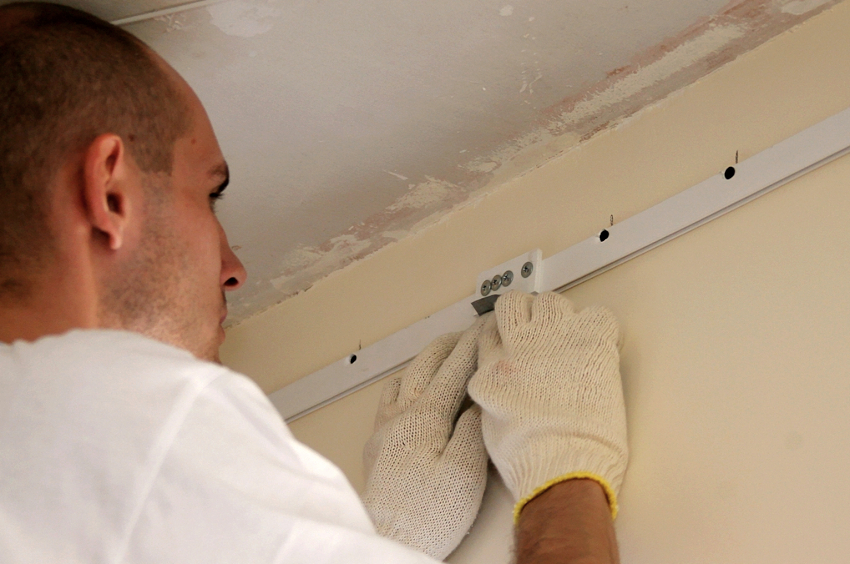
When fixing the PVC profile to the wall with self-tapping screws, pieces of plastic can break off from it
The above problems are not only the characteristics of plastic as a material, but also the result of poor product quality. An active dumping company in the domestic market has provoked the emergence of a large number of products of extremely low quality.
Helpful advice! When choosing a profile, you should listen to the advice of sellers and opt for the option they recommend for a particular type of film.
Stretch ceiling-to-ceiling fastening technology
Most often, the stretch ceiling frame is made in the upper part of the walls. It is much easier technically than fixing to the ceiling. But sometimes the use of this simple method of mounting a profile is impossible. The reasons may be as follows:
- the walls have old brickwork, to which it is almost impossible to firmly fix the profile;
- the walls are covered with a thick layer of crumbling plaster;
- drywall is used as a wall covering, the profile is heavy, the canvas is dense;
- the room has a built-in wardrobe;
- hidden communications pass through the walls.
When planning the fastening of the stretch fabric to the ceiling, it is necessary to pay special attention to the quality of the profile. Better if it is an aluminum version. Fastening to the ceiling is much more difficult than to the walls, already due to the fact that the base will be dense (this is the overlap between floors). If you use a plastic profile of dubious quality, it can be significantly damaged even at the installation stage.
Comprehending how to mount a stretch ceiling profile should begin with surface evaluation. The problem is that with the ceiling mounting method, it is almost impossible to set the frame evenly on a surface with significant depressions and bulges. Therefore, all irregularities must be repaired, and only then can the profile be installed.
The main types of fastening stretch ceilings (fixing canvases)
As mentioned above, fastening a stretch ceiling to a wall or to a ceiling is a difference in the place of fixing the frame. There are also several ways that differ in the mechanism of fastening the canvases in the profile:
- glazing system (wedge);
- harpoon;
- clip-on.
A U-shaped profile made of aluminum or plastic is used as a material for making the frame with bead technology. The inserted glazing bead acts as a wedge, which is why the system has a double name. This method is used to stretch PVC ceiling sheets. During fixing, there is no need to use additional elements. That is why the system is inexpensive, the implementation of work does not require a lot of time.
The disadvantages of this method include the obligatory professional level of the performer, the often arising weakening of the glazing bead and the sagging of the stretch ceiling, the impossibility of dismantling in order to replace the fabric of the structure.
To understand how stretch ceilings fixed with a harpoon system are attached, it is worth remembering how this throwing weapon works. Following the analogy, additional elements are welded along the entire perimeter of the canvas, with the help of which the stretched canvas will be held in the profile. This method is more expensive and laborious, but due to the reliability of the result it is chosen most often.
Important! When using the harpoon method of fixing the canvas, it is worth using only an aluminum profile.
The clip system is used for fixing fabric stretch ceilings. About her - in a separate section of the article.
Typical dimensions of profiles for stretch ceiling structures
The main parameters of the profiles for stretch ceilings are their length and height. Using the length, the required number of units is calculated to create the frame. The height allows you to calculate how much lower the suspended ceiling will be in comparison with the main one.
Related article:
Stretch ceilings: photos that will help you choose the best option for each room
How to choose a color and design depending on the purpose of the room. What to look for when buying. Price range.
Aluminum wall profile is characterized by the following dimensions:
- length - 2.5 running meters (less often - 3 m);
- height - 26-27 mm;
- width - 10 mm.
The dimensions of the ceiling profile for an aluminum stretch ceiling are as follows:
- length - 2.5 running meters (less often - 3 m);
- height - 20 mm;
- width - 25 mm.
The aluminum dividing profile has the following dimensions:
- length - 2.5 running meters (less often - 3 m);
- height - 18 mm;
- width - 55 mm.
Universal aluminum profile:
- length - 2.5 running meters (less often - 3 m);
- height - 26 mm;
- width - 15 mm.
As for the plastic profile for a stretch ceiling, the dimensions also differ depending on the place and method of fixing the frame.
The AP profile type is intended for overhead position, it is characterized by the following dimensions:
- length - 2-2.5 running meters;
- height - 10 mm;
- width - 30 mm.
The AM profile is used for ceiling fixation:
- length - 2-2.5 running meters;
- height - 30 mm;
- width - 15 mm.
Before purchasing a profile, it is imperative to perform a calculation, having determined the exact perimeter of the future frame.
How to install stretch ceilings: an algorithm of actions
Installation of a stretch canvas is considered one of the most affordable ways to give aesthetics to the ceiling surface of a room. If desired, it can be done by hand. You just need to have knowledge about the sequence and features of the process, as well as own a certain set of tools.
The basic algorithm for performing work can be as follows:
- Measurements. To do this, you need a tape measure and a laser level.
- Examination of surfaces with a metal detector. This should be done in the event that the state of the walls (the presence of built-in communications in them) is unknown.
- Marking of lines at the level of fastening of stretch ceiling profiles.
- Heating the canvas with a heat gun.
- Fixing the canvas in the corners, stretching along the diagonals with additional heating with a gun.
- Refueling the canvas along the entire perimeter of the frame.
Helpful advice! It is not worth saving on a laser level. Without its use, it is extremely difficult to make accurate markings for the future frame.
It is worthwhile to independently install a stretch ceiling with a room size of no more than 25 m²... If the dimensions of the room are significant, in order to avoid mistakes, it is better to entrust the execution of the work to professional masters.Luminaires, especially in large quantities, also complicate the installation process. If the room has complicated geometry (additional corners, alcoves) or a multi-level ceiling is planned, you should not only trust the masters, but also be sure of the high level of their professionalism.
An important point when deciding on self-installation of the ceiling is the price of the service. Ceilings are installed more often by specialists of the same companies that sell them. The price of one meter of inexpensive Chinese cloth with installation averages 500-700 rubles. The use of more expensive materials increases the cost to 2000 rubles per m²... For registration of a place for a lamp, you must pay an additional 500 rubles. If there are additional corners, the price will increase by 150 rubles each.
Material features and installation of fabric ceilings
Fabric ceilings account for about a third of the products. Consequently, the material has its fans and is in demand. If we compare the installation of PVC and fabric canvases, then the latter have the advantage of simplicity and availability.
The stretch fabric is made of polyester, the fabric is thin and has a rough texture. The material is mechanically strong enough. To enhance aesthetics, the fabric can be supplemented with fiberglass or natural threads.
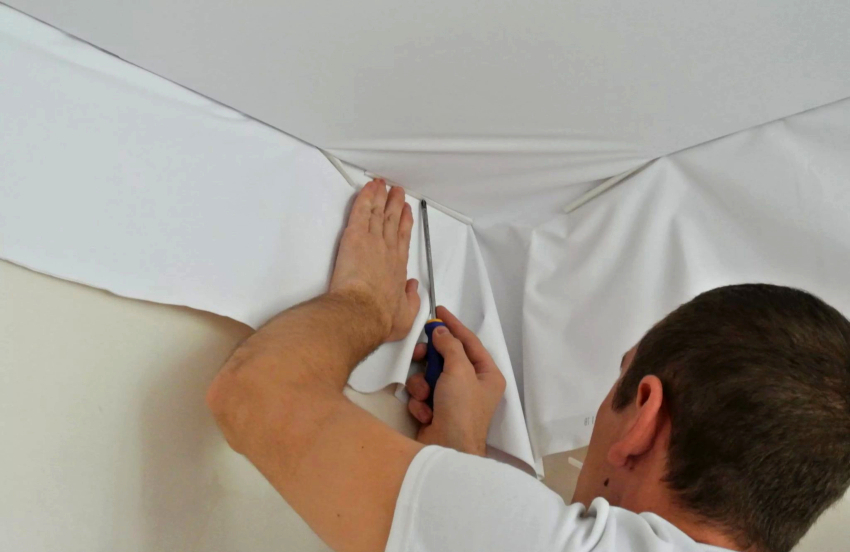
Refuel fabric cloth start on the short side
In stores, fabric for stretch ceilings is offered in rolls with a width of 5 m. This size allows you to do without seams and joints during installation.
Guides for stretch ceilings made of fabric are more often plastic, but it is possible to use aluminum. The installation method can be similar to the installation of PVC sheets. As for the method of fixing the web in the profile, a clip system is used for the fabric. It is based on the action of the latch. The fabric is tucked into the space formed by joining the profile planes. One plane is at an angle to the fabric. It is such a fastening that allows you to reliably fix the stretch ceiling canvas.
The canvas should be filled starting from the short side, then you need to start the opposite one and only after that move on to the long one. Use a special rounded spatula to advance the fabric. Working on one wall, actions should be performed from the middle to the edges.
If the fabric sags in some areas, it must be heated with a construction hair dryer, located at a distance of at least 20 cm from the canvas, and pulled.
The fabric does not stretch like PVC film. That is why the clip method is used to secure it.
Important! Before installing the fabric ceiling, the canvas must be unfolded and straightened on a flat surface. This will greatly affect the aesthetics of the finished structure.
Profile for stretch ceiling with LED lighting
The illuminated ceiling decorates the interior, creates a feeling of unlimited space, and promotes the manifestation of positive emotions. Ceiling structures can be illuminated in different ways. The most popular are the following:
- backlighting between levels;
- lighting of carved ceiling elements;
- creating the effect of a "floating" ceiling;
- "Floating" lines.
Profiles for backlit stretch ceilings can be used differently. To create lighting between the levels, use the NP-5 option. The canvas is fastened in it using a harpoon method. The profile has a special groove in which the LED strip fits.
The carved ceiling itself has a high level of decorativeness. If the lower part is also highlighted, the composition is magical. For this type of lighting, the Apply 40 profile is used.It allows you to position the main and lower cut cloth at a fairly large distance, and install an LED strip between them.
For “floating” stretch ceilings, the following profiles are used:
- KP 4003. Sturdy aluminum profile. The LED slot has a latch, which greatly simplifies the installation of the backlight and allows you to replace the tape if necessary.
- KP 2301. Material for production - aluminum. A decorative insert is used to decorate the lighting with this profile. It allows you to evenly distribute the light flux, and also gives the design aesthetics in the daytime.

LED illumination can be performed not only along the perimeter of the ceiling, but also in any place where it is needed
The floating effect with this method of lighting design is created by the direction of the light that separates the ceiling from the walls.
Light lines on the stretch ceiling can be organized using the KP 4075 profile. Its shape allows you to fix several canvases, leaving grooves for the LED strip between them.
False ceiling rails, system installation
Suspended structures are another popular way to decorate ceilings. They are also based on frames from a profile, but the canvas is not stretched on them, they are hemmed with plastic, wooden, metal or other plates. Among suspended ceilings, two types of construction are distinguished:
- Solid. Plates are fixed tightly to each other, creating a uniform surface.
- Modular. The ceiling is divided into individual elements, which can be square or rectangular.
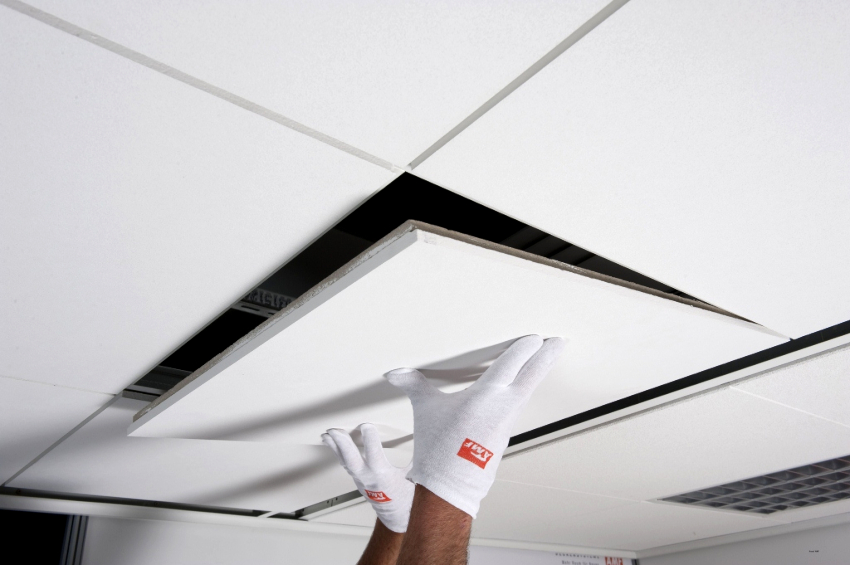
For the Armstrong suspended ceiling it is necessary to use a T-shaped longitudinal and transverse profile
For different types of structures, their own guides are used.
For the Armstrong suspended ceiling, which is widespread in offices and sales areas, a T-shaped longitudinal and transverse profile is required. It is not completely covered with slabs, forming part of the design of the structure.
Plasterboard ceiling profiles - UD and CD. A frame contour is drawn from UD along the entire perimeter of the room. Then the CD-profile is inserted perpendicularly into it. It is he who takes on the main load - sheets of drywall are fixed to him. If the ceiling is mounted on several levels, a special UW profile is used for it. Its shape is identical to the UD variant, but it is much wider.
A very important step in the installation of a profile frame is preparation. It is imperative to create a plan for the future structure to scale, determining the location of guides, lamps, suspensions. This scheme will allow you to correctly calculate the required amount of materials, including screws, self-tapping screws, etc., and will also speed up the execution of markings on the walls and ceiling.
Helpful advice! When buying a profile for a false ceiling, on which you plan to lay communications, you should definitely consult what maximum load the frame structure can withstand.
The main types of ceiling hangers for profiles
The very name "suspended ceiling" implies the use of elements that will hold the structure. These are suspensions. They, to a certain extent, provide the required level and strength of the profile frame. There are several types of such suspensions.
Direct suspensions. They are 300 mm long and 30 mm wide. This size is intended for a 60x27 mm ceiling profile. The element is made of galvanized steel, the thickness of the metal varies from 0.4 to 1 mm. The most demanded products are of medium thickness - 0.6-0.8 mm. They are tough, durable. Straight hangers can be made to order. Usually they are needed when the ceiling is lowered a considerable distance. The maximum length of such elements reaches 520 mm.Direct hangers are attached to the base ceiling using holes in the central part.
Anchor suspensions. They differ from straight lines in the fastening part: it is inserted into the profile using a groove. There is a spring at the top of the anchor suspension that provides adjustment. In addition to this part, a rod is sold. This is a wire with an eyelet. The element is required for fixing to the base ceiling. The length of the rod is 35-152 cm. The suspension is made of steel with a thickness of 0.7 mm. The product is selected according to the dimensions of the ceiling profile.
Nonius suspension. In the upper part it has several holes, which allows the element to be fixed to the main ceiling in the desired position. The lower part is more often a yoke (although there may be other forms). The length of the vernier suspension is 40-100 cm. Additionally, a bracket is purchased that fixes the element in a certain position.
Manufacturers also offer several types of vibration mounts. Such devices are also designed to suppress noise in rooms. They can be standard, with polyurethane, with a removable platform. All options are expensive and require special conditions for installation.
Ceiling profile "Knauf": quality, ease of installation, price
Almost everyone who has made repairs at least once is familiar with Knauf products. It is an international company that produces building materials, in particular profiles. They are made from steel by cold rolling. The profiles of this manufacturer are always galvanized, which significantly extends their service life.
Knauf metal profiles have the following classification:
- Rack. Section sizes - 50/50, 75/50, 100/50 mm.
- Guides. Section sizes - 50/40, 75/40, 100/40 mm.
- Ceiling. Section sizes - 60/37 mm.
- Ceiling guides. Section sizes - 28/27 mm.
The standard length of the elements is 3000 and 4000 mm. It can be increased or decreased if necessary. This is usually done at the request of the customer.
The most demanded option is the PP Knauf ceiling profile 60x27x3000 mm. It is used to create frames for ceiling structures. The main advantages of this type of building material are the following:
- the shelves and the profile wall each have three grooves, which enhance the strength of the product;
- the width of the wall allows you to conveniently attach sheets or panels to it;
- the connectors that come with the profile save time when assembling the required frame.
The price of the Knauf ceiling profile is on average 180–220 rubles per unit.
Helpful advice! When installing a frame made of PP Knauf 60x27 mm, special self-tapping screws should be used, which can be purchased together with the profile. This will greatly simplify the fastening work.
Profiles for stretch ceilings: expert advice on the selection and application
Sometimes trifles, inaccuracies and, at first glance, minor deviations from technology can significantly harm. Small defects of the stretch ceiling will interfere with a positive perception, and in the end you will want to get rid of them. To avoid mistakes during installation, you should heed the advice of experts:
- It is necessary to install the stretch ceiling upon completion of all repair work. Otherwise, there is a risk of staining or damage.
- The ceiling profile for a stretch ceiling should be chosen depending on the quality of the canvas.
- It is better to install the luminaires simultaneously with the installation of the ceiling and in the presence of specialists who perform it.
- Do not use lamps that are too powerful: they can warp and lose color the stretch fabric. The power of incandescent lamps should not exceed 60 W, halogen lamps - 25 W. LED lighting is the most suitable for tension structures.
- To prevent the formation of condensation between the base and stretch ceilings, it is recommended to make ventilation holes, and for a large area - grilles.
- If necessary, you can purchase a stretching cloth with a soundproofing function. It has a high price tag, but the effect will justify the additional cost.
- You should not choose a bright ceiling for a small room - it will make the room even smaller.
- The height of the room is increased by glossy ceilings. If the canvas is located below 220 cm, distortion of reflective objects is possible.
Ceiling defects are most noticeable in case of poor-quality repairs. Therefore, it is necessary to carefully choose the materials for its installation. The primary basis is the profile frame. Structural and fastening elements must correspond to the purpose and technical conditions of use. That is why you should first arm yourself with the necessary information (in particular, that proposed in this article), and then act.
